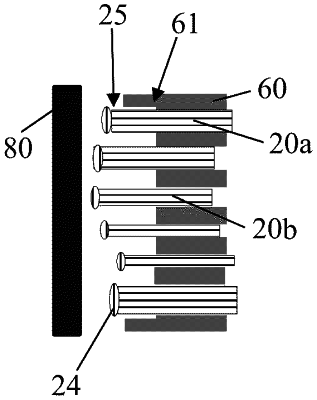| CPC A46D 3/005 (2013.01) [A46B 3/06 (2013.01); A46B 9/04 (2013.01); A46D 1/08 (2013.01); A46D 3/045 (2013.01); A46B 9/065 (2013.01); A46B 2200/1066 (2013.01)] | 16 Claims |

|
1. A method of producing a toothbrush head or a part thereof, comprising:
providing at least two bristle tufts, each comprising a plurality of bristle filaments, wherein the at least two bristle tufts differ from one another in at least one property;
arranging the at least two bristle tufts in a hole perforation plate comprising a front surface, a back surface, a thickness therebetween, and a plurality of holes therethrough, wherein the plurality of holes is shaped and distributed in the hole perforation plate according to a desired bristle field of the brush head being produced;
arranging an energy source at a predefined distance to the front surface of the hole perforation plate so that ends of the at least two bristle tufts and the energy source are arranged contactless;
arranging the at least two bristle tufts in a fusing position, wherein the ends of the at least two bristle tufts to be fused are arranged in the hole perforation plate at different distances to the front surface resulting in different distances of the bristle tuft ends to the energy source, wherein the distance is adjusted according to the at least one property of the at least two bristle tufts, wherein in the fusing position, the distance between the energy source and the bristle tuft ends of the bristle tufts decreases with increasing cross-section of the bristle tuft;
applying energy from the energy source to the ends of the at least two bristle tufts until fuse balls are formed at the ends of the at least two bristle tufts;
transferring the at least two bristle tufts to a subsequent process position, wherein a distance of the bottom edge of the fuse ball of at least one bristle tuft to the front surface is different from a distance of the bottom edge of the fuse ball of said bristle tuft to the front surface in the fusing position; and
over-molding the fuse balls of the at least two bristle tufts with plastic material, thereby forming the brush head or the part thereof.
|